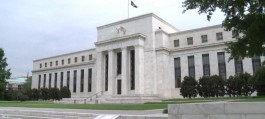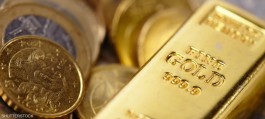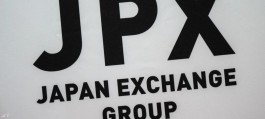The Australian currency outperforms most major and minor currencies, and hot inflation in Australia puts heavy pressure on the central bank
The Australian dollar led the foreign exchange market for the second week in a row, outperforming most major and minor currencies, thanks to hot inflation data in Australia, which puts pressure on the Reserve Bank of Australia to keep interest rates high for as long as possible.
Prices in Australia have risen to their highest levels this year, adding to inflationary pressures on policymakers at the Reserve Bank of Australia, which already considered raising interest rates at its last meeting.
As a result, bets on Australian interest rate cuts this year are completely gone in the markets, making the Australian dollar one of the best investment opportunities currently in the foreign exchange market.
Returning to the list of winning currencies, the Japanese yen came at the bottom of the list, for the second week in a row as well, under the supervision of the Japanese authorities, who did not intervene to support the local currency despite it exceeding the 160 yen barrier per US dollar and recording lower levels not reached since 1986.
Before completing the reasons that supported the Australian dollar and put heavy pressure on the Japanese yen, let us first learn about the performance of the eight major currencies in the foreign exchange market over the past week. The Australian dollar achieved a rise of 6 points on the weekly FX News Today index for measuring the strength of currencies, then the euro in second place with 3 points, then the Canadian dollar in third place with 2 points, and the Japanese yen ranked last with a negative 7 points.
The Australian Dollar Looking at the details of the Australian dollar’s performance last week against the seven major currencies, we find that it swept the Japanese yen and achieved a rise of 1.1%, and on Friday, June 28, it recorded its highest level in 17 years at 107.46 yen.
It rose 0.95% against the Swiss franc, hitting a three-week high of $1.6647 on Friday, and rose 0.9% against the New Zealand dollar, hitting a six-week high of $1.0964 on Friday.
It added 0.45% against the US dollar and hit a two-week high of 66.85 cents on Wednesday, and rose 0.4% against the British pound and hit a six-week high of $1.8911 on Friday.
It rose 0.35% against the Canadian dollar, and rose 0.25% against the euro, hitting a one-year high of $1.5997 on Wednesday.
Hot inflation in Australia
Data from Australia's Bureau of National Statistics last week showed the annual consumer price index rose 4.0% in May, the fastest pace since December 2023, above market expectations for a 3.8% rise. The index rose 3.6% in April.
Service cost pressures have remained stubbornly high in Australia, a disappointing outcome for Reserve Bank of Australia policymakers and prompting markets to abandon hopes of any Australian interest rate cuts this year.
Opinions and analysis
“The consumer price data was higher than we expected, higher than the market expected, and higher than the RBA expected,” said Madeleine Dunk, economist at ANZ.
“I think the RBA will want to see a slowdown in services and goods numbers in the second half of this year, and if that doesn’t happen we expect Australian interest rate cuts to be delayed until next year,” Dunk explained.
“Renewed inflationary pressures are likely to remove any chance of the RBA cutting interest rates this year,” said James Knifton, senior corporate FX trader at Convera.
Australian interest
Markets are now pricing in almost no bets on an Australian rate cut this year. The Reserve Bank of Australia’s expected total easing this year has been cut to 3 basis points, down from 5 basis points previously.
The hot inflation data is expected to prompt the Reserve Bank of Australia to raise interest rates. RBA Governor Michelle Bullock revealed last week that the central bank discussed raising interest rates at its last meeting. Japanese Yen The image above shows the Japanese yen’s wide losses against the G7 currencies last week in the foreign exchange market, despite warnings from Japanese authorities, after the yen traded below 161 yen to the dollar for the first time since 1986.
Japanese authorities
Japanese Finance Minister Shunichi Suzuki said on Friday that authorities are deeply concerned about the impact of rapid and biased foreign exchange rate movements on the Japanese economy.
Suzuki added: The government is closely monitoring developments in the foreign exchange market with a great sense of urgency, and efforts to continue moving forward with financial reform are of paramount importance.
Japanese authorities are facing renewed pressure to halt sharp declines in the yen's value, with traders focusing mainly on the interest rate differential between Japan and the United States.
Tokyo spent 9.8 trillion yen ($62.23 billion) intervening in the foreign exchange market in late April and early May, after the Japanese currency hit a 34-year low of 160.21 to the dollar on April 29.
A weaker yen is a boon for Japanese exporters, but a headache for policymakers because it raises import costs, adds to inflationary pressures and squeezes households.
New Foreign Exchange Diplomat
Japan's government appointed a new foreign exchange diplomat on Friday amid heavy losses in the yen, raising expectations of Tokyo's imminent intervention in the market to support the struggling currency.
Veteran financial regulator Atsushi Mimura replaces Japan's top currency diplomat Masato Kanda, who previously launched the largest-ever yen-buying intervention this year.
The change is part of a regular staff reshuffle that takes place every year, and comes as officials have stepped up warnings about potential interference in the foreign exchange market.
Opinions and Analysis • Moh Siong Sim, a strategist at the Bank of Singapore, said: “After we broke the 160 level (for the dollar without any real intervention), what is the next step? I think that is what the markets are asking. When will they raise their hands, if they do not show their hands at 160?”
•The appetite for carry in a low-volatility environment remains, said Ray Attrill, head of foreign exchange strategy at National Australia Bank.
Attrill added: “Having passed the 160 level (per dollar) without intervention, I don’t think the market is as scared as it was in the run-up to reaching the 160 barrier.” USD JPY Trading Companies Australian Dollar Trading Companies AUD USD







































